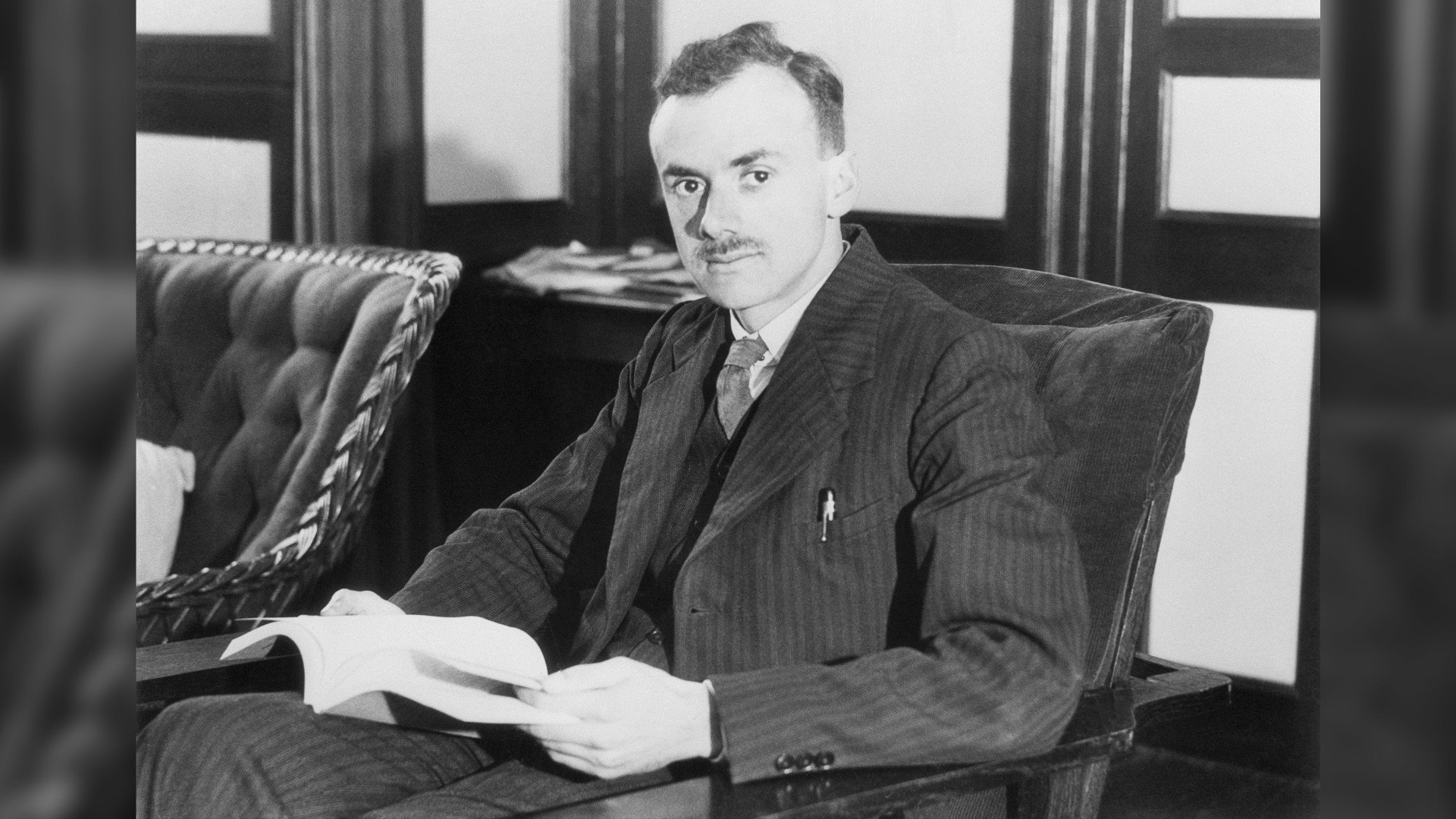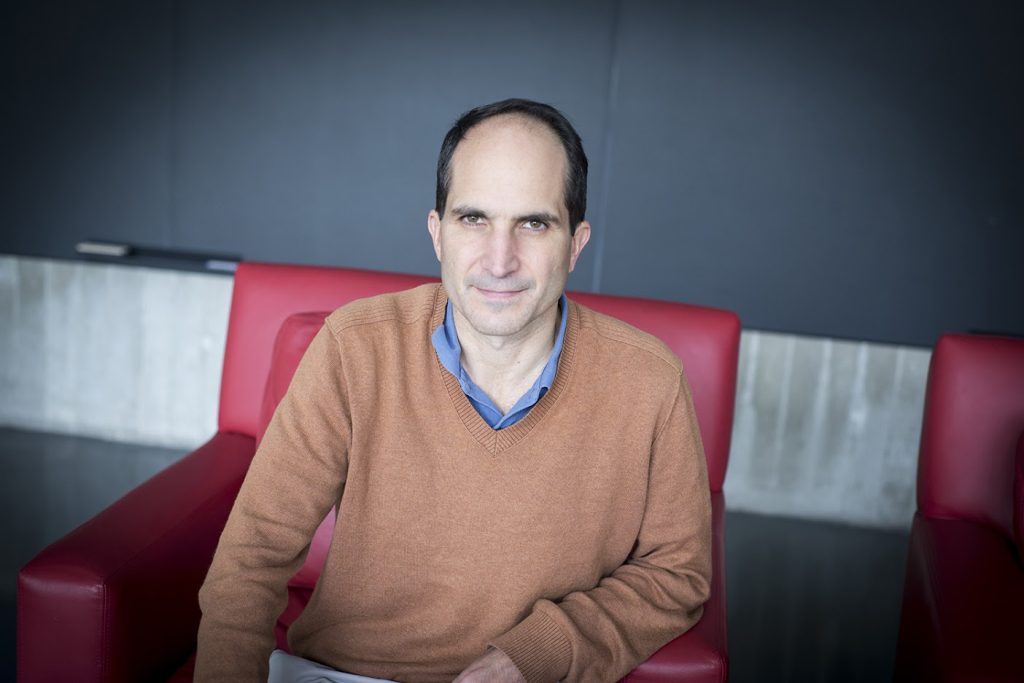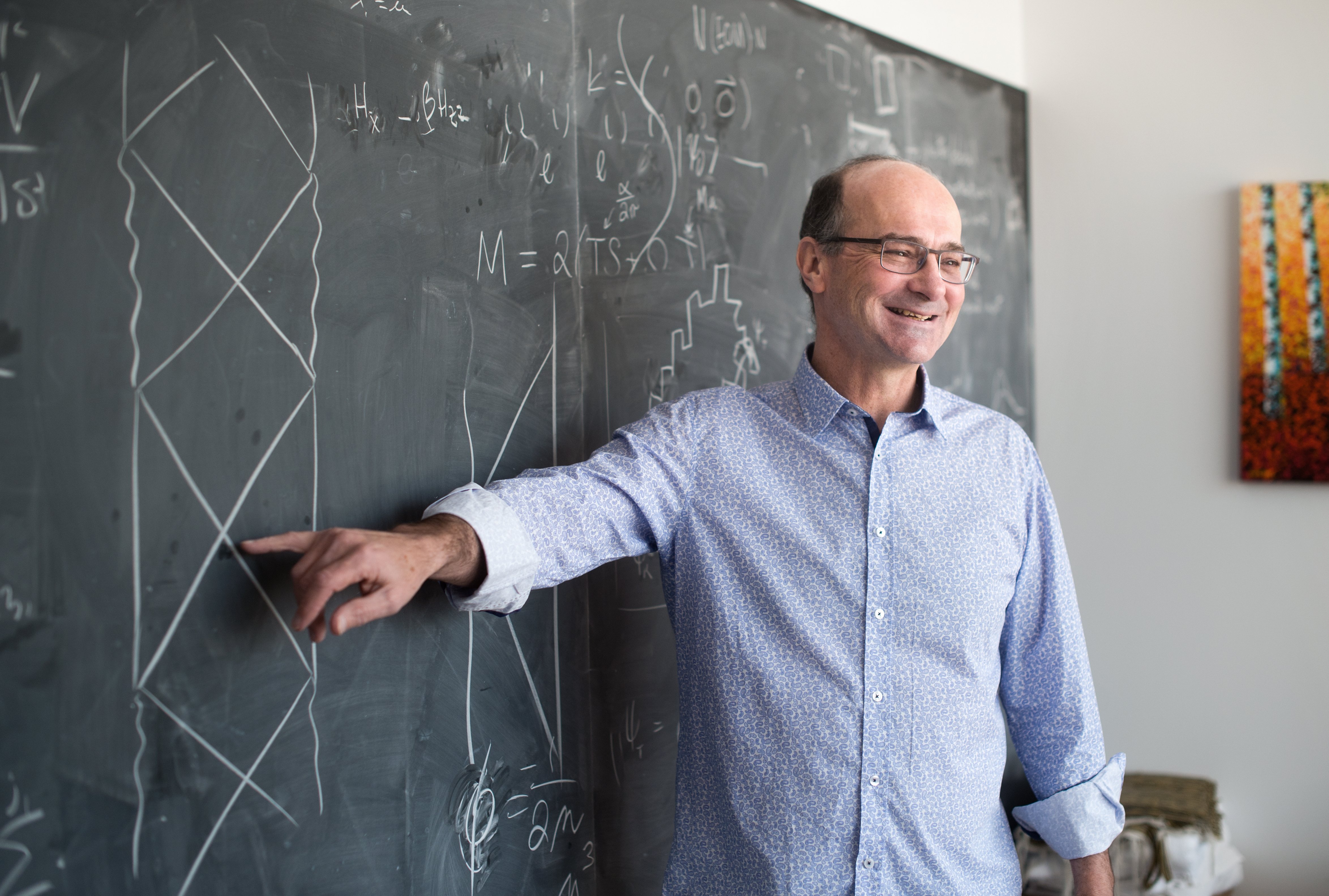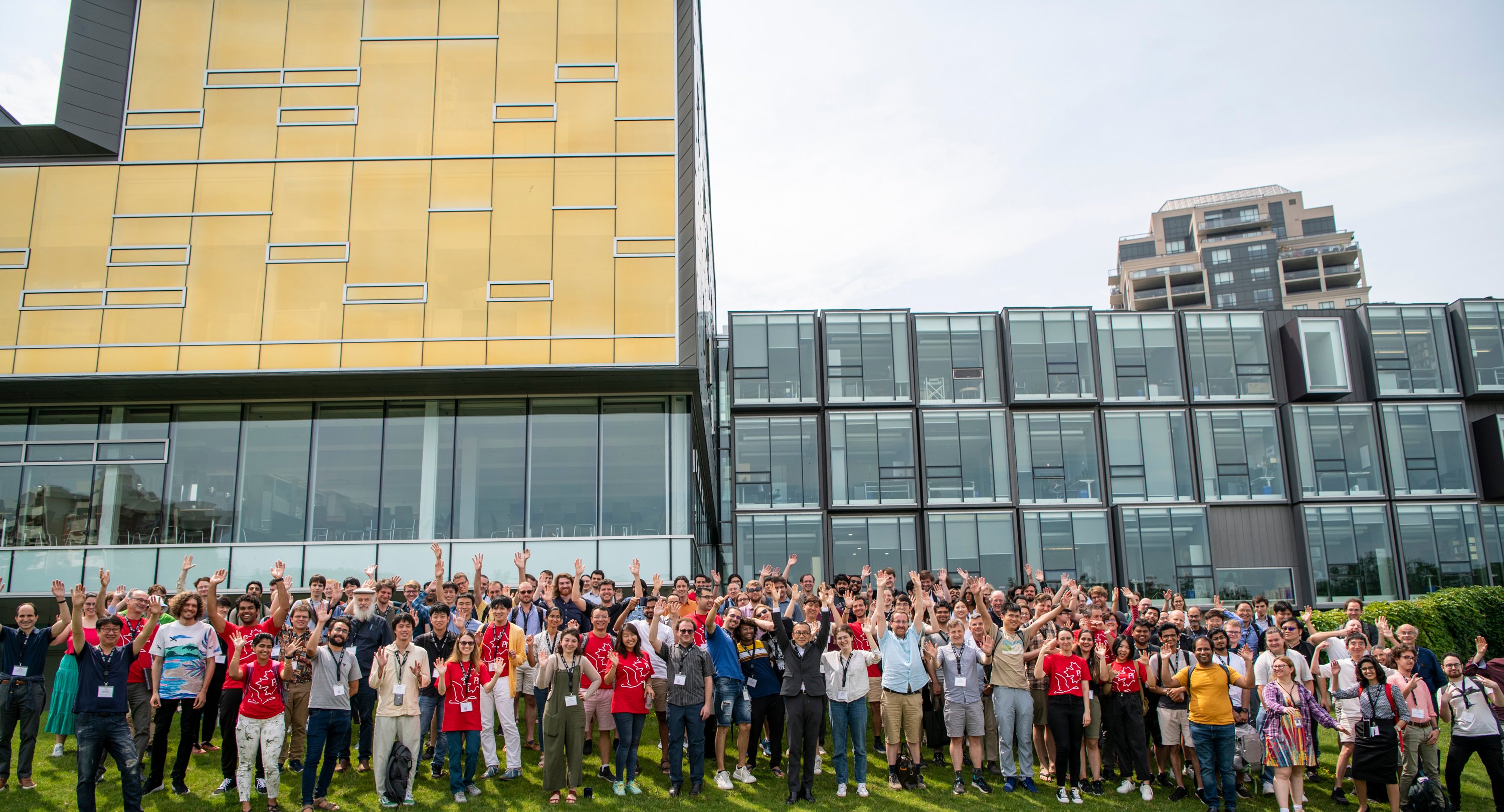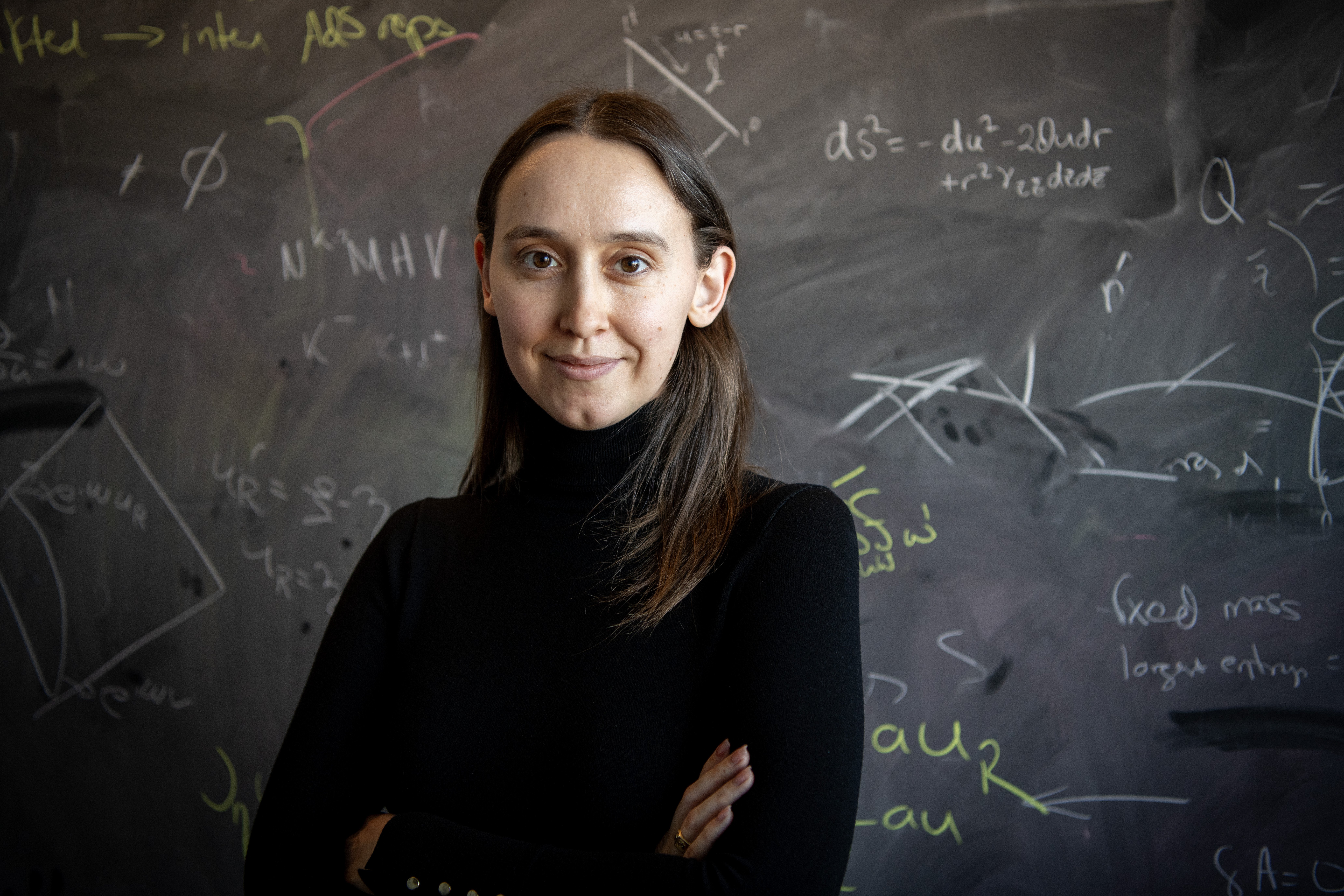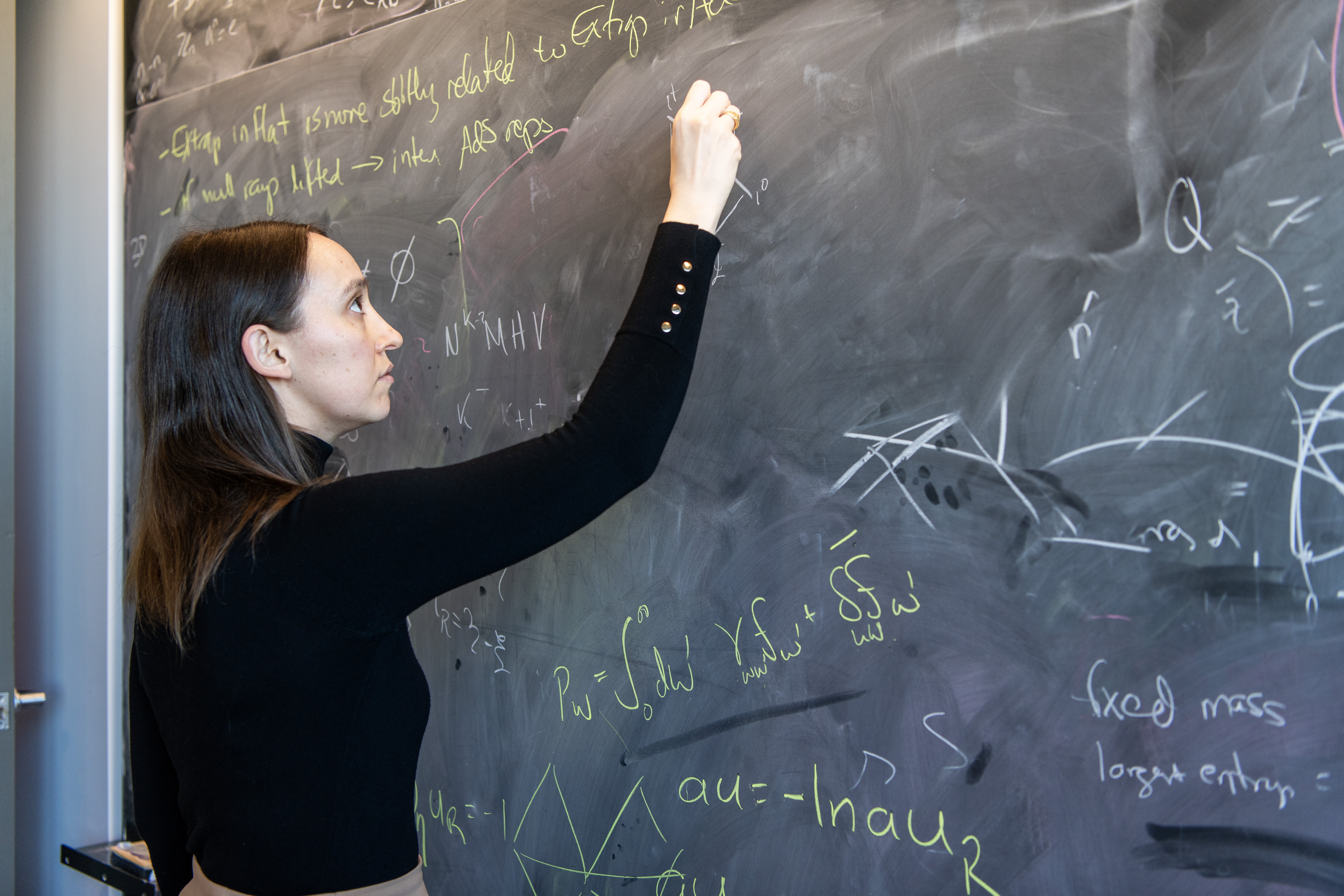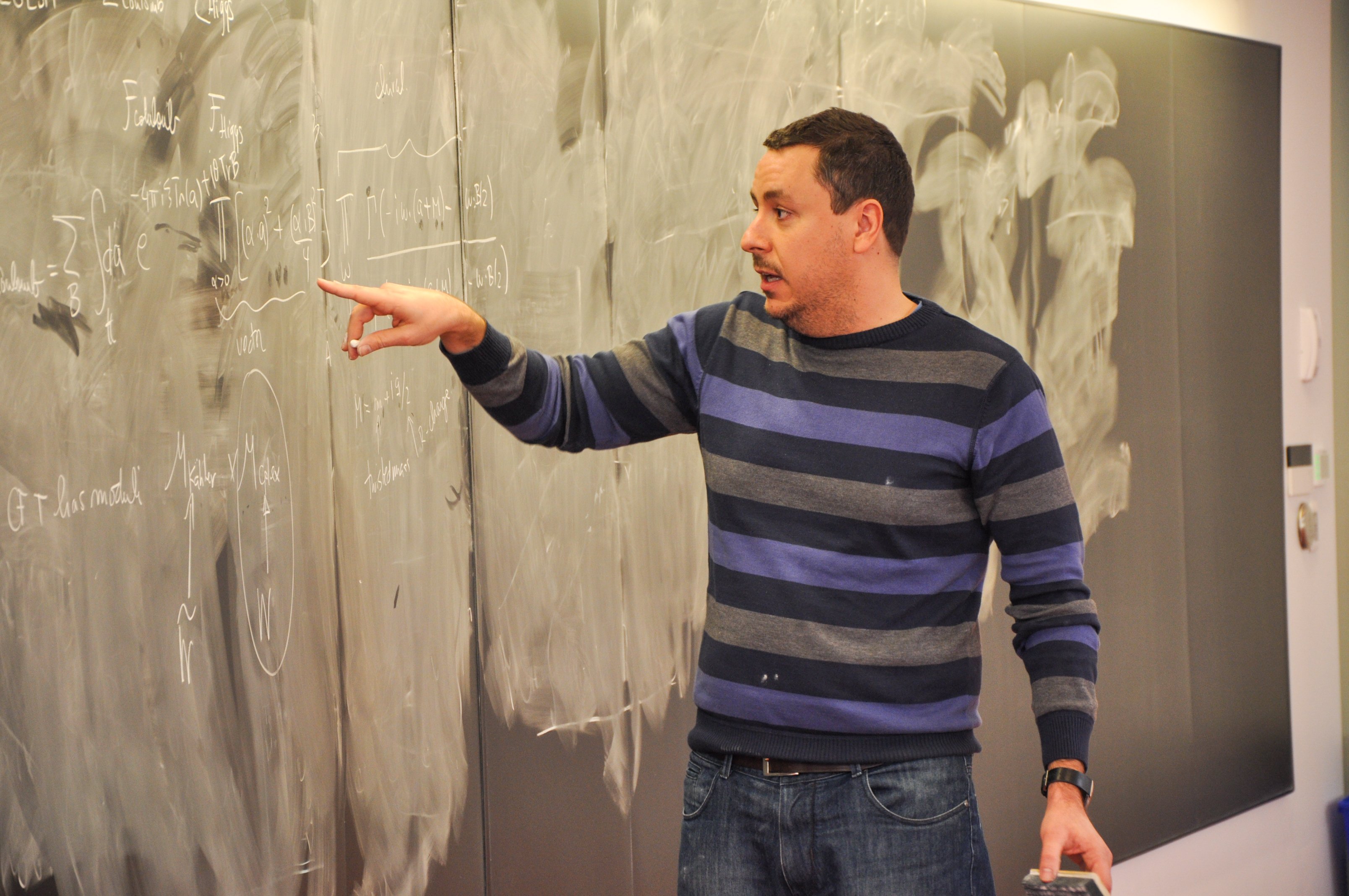“The symmetry of musical compositions mirrors the symmetry that exists in quantum fields, and the breaking of these symmetries in both cases lends beautiful complexity. In physics we get the distinct forces of nature with symmetry breaking, in music we get tension and resolve.”
― Stephon Alexander, The Jazz of Physics: The Secret Link Between Music and the Structure of the Universe
Imagine a grand concert hall, filled with the resonances of ideas, equations, and the hum of the universe being decoded.
This is Perimeter Institute for Theoretical Physics – a stage where the deepest symphonies of nature are composed and performed.
Each subfield of theoretical physics is like an instrument in this orchestra. They are all important, but some areas such as the string section with the violins, the violas, cellos and double basses, play a central role.
At Perimeter, quantum fields and strings resonates with quantum foundations, quantum information, quantum gravity, strong gravity, quantum matter, particle physics, cosmology, mathematical physics, quantum foundations.
When Paul Dirac attempted to quantize the electromagnetic field in the late 1920s, quantum field theory was born. Quantum field theory says all of space is filled with invisible substances called “fields” – like invisible fabrics stretched throughout the universe. These fields can vibrate or fluctuate, and what we see as particles are actually tiny ripples or excitations in these fields. A ripple in the electron field is an electron; a ripple in the photon field is a photon (a particle of light).
Quantum field theory is the modern framework physicists use to understand how the tiny building blocks of the universe behave, not as solid particles, but as these ripples in invisible fields that fill all of space.
It has been enormously successful, explaining a vast range of experimental results with remarkable precision. For physicists, quantum field theory is the most accurate and comprehensive description of fundamental physics to date.
Meanwhile, string theory’s roots go back to the late 1960s, when physicists were trying to describe the physics of particles like protons, neutrons and the growing jumble of other particles being discovered in new collider experiments. In string theory, the fundamental entities everything is made of are not point particles but one-dimensional strings that vibrate, and much like the vibration of the string of a guitar can produce different notes, different vibrations of these strings correspond to different particles.
The relationship between quantum field theory and string theory can be imagined as the difference between looking at a beach from far away versus looking at the grains of sand from up close.
In quantum field theory (low energies), you are seeing the beach from far away, and you can survey the whole, beautiful field of sand. In string theory (high energies), you are seeing the grains of sand from up close, and you start to see the “stringiness” of each particle.
Mathematically, these two descriptions dovetail. Or, as physicists would say, string theory (at high energies) reduces to quantum field theory (at low energies.) Hence, at Perimeter, the two are united under the banner of quantum fields and strings, an area of physics that plays a crucial role in the larger orchestra as the symphonies of nature are being composed.
One of the most fascinating examples of the interplay between string theory and quantum field theory is “holographic duality”, which has played an important role in many areas of physics since it was proposed by Juan Maldacena in 1997.
Holographic duality is known more precisely as the Anti-de Sitter/Conformal Field Theory (AdS/CFT) correspondence. It is called “holography” because it is analogous to a hologram like the 3D holographic image on a credit card coming from the 2D information on the flat surface of the card. Except in the physics case, the holographic duality is a mathematical equivalence which says we can describe the physics of gravity in a special 3D spacetime with a negative curvature known as Anti-de Sitter space in terms of a 2D quantum field theory on the boundary of that space – and vice versa.
Although we don’t actually live in a spacetime with a negative curvature, this “toy model” is a powerful tool that helps researchers explore one of the biggest challenges in theoretical physics: building a unified theory of quantum gravity.
That is, physicists want to bridge quantum mechanics, our best description of particles and forces at the smallest scales, with Einstein’s theory of gravity, which describes gravitational forces as the bending of space and time (spacetime) by mass and energy in the larger scale cosmos.
Both are enormously successful theories, having been verified with exquisite precision by many experiments. But successfully bringing them together in a coherent theory of quantum gravity has proven exceedingly difficult. Combining the two theories is like trying to translate between two completely different languages. The holographic duality gives us a dictionary that helps bridge the gap.
But besides quantum gravity, the holographic duality has also been a powerful tool for other areas of study in physics. The idea that information contained within a volume of space can be encoded on its lower-dimensional boundary has produced new insights in areas like condensed matter physics and quantum entanglement.
The quantum fields and strings faculty at Perimeter includes Robert Myers, Sabrina Pasterski, Freddy Cachazo, Davide Gaiotto, Jaume Gomis, Alex May and Pedro Vieira. The group also includes research associate faculty members, postdoctoral researchers and graduate students.
The borders between different fields of research are often blurred. For example, Alex May, Rob Myers and others at Perimeter are combining quantum information and quantum gravity to gain new insights into both areas. At Perimeter, no one researcher is alone. They are all a part of the larger orchestra.
Robert Myers: A founding member and conductor of our theoretical physics orchestra
Robert Myers recently finished his term as executive director after serving in that role for nearly six years. He is now refocusing on full-time research at Perimeter, where he holds the position of Director Emeritus and the BMO Financial Group Isaac Newton Chair in Theoretical Physics, a chair position funded by one of our longstanding partners, BMO Financial Group.
When Myers first arrived in Waterloo in 2001, he was asked to work at home because Perimeter had no place for the researchers yet. But shortly afterwards, the institute moved into the historic post office building on King Street.
It still had very few players. One could say that Myers was the strings section at the time.
But a few adventurous postdocs joined him later in the fall. Myers says. “We had humble beginnings and started out with a small number of people, but it was an exciting time, a very energetic time.”
If Perimeter were an orchestra, Myers would be one of its all-important conductors. He helped to recruit many of the faculty and postdoctoral researchers who followed. He also helped to create the many harmonic relationships between the various disciplines.
“One of the great things about quantum fields and strings is that it connects with all sorts of different areas, and I have seen that happen again and again in my time at Perimeter,” Myers says. In fact, his research at Perimeter has involved collaborations with researchers in cosmology, particle theory, strong gravity, quantum matter and quantum information.
As executive director, he also steered the institute through the Covid-19 crisis so that it was able to emerge from it as a still growing and thriving entity.
From humble beginnings to a global gathering place
Creating a new institute from the ground up involved much more than recruiting a team of researchers. It meant inventing countless new structures and programs, and Myers left his mark on nearly all of them. He played a key role in building Perimeter’s world-renowned conference program, which now draws nearly a thousand of scientists from around the world for workshops and talks every year.
Two years ago while he was the executive director, Perimeter hosted the Strings 2023 conference. The annual Strings meetings are the premier international gathering for string theorists and one of the largest conferences in theoretical physics. The 2023 edition drew more than 200 scientists from around the world to Perimeter, while many others attended online. Maldacena, credited as a pioneer and developer of the holographic duality, gave a public lecture that served as a highlight of the event.
The talks covered the latest developments in quantum fields, strings, and gravity, while connecting to work in quantum information, quantum matter, particle phenomenology, and pure mathematics.
The organizing committee led by Sabrina Pasterski and comprised of Perimeter’s quantum fields and strings and mathematical physics faculty made that important hybrid conference happen.
That conference was tribute to how far Perimeter has come since 2000, from just a few people, to a globally respected institute that can draw together scientific luminaries from around the world.
“We have amazing researchers here who are producing new ideas, but we are also part of a bigger community. One of the great things about Perimeter is that we can easily hold conferences on topics at the cutting edge of research. Over the years, we have brought thousands of really outstanding physicists together in Waterloo,” Myers says.
Bridge building with the powerful mathematical tool of holography
When Myers first arrived at Perimeter, the holographic duality, specifically the AdS/CFT correspondence, was relatively new. But having been proposed a few years earlier by Maldacena, it was already creating a great deal of excitement in the world of theoretical physics.
Since then, it has become a powerful thread in connecting our understanding of nature from the tiniest scales inside of an atom to the vast reaches of the cosmos.
Myers uses it to better understand how to build a quantum gravity theory. But using the same “holographic” tools, he and his team have gained new insights in understanding quantum chromodynamics, the theory of the strong nuclear force. He and his collaborators now draw on ideas from quantum information to gain deeper insights into the holographic framework.
But … are we holograms?
This is the question that people often ask, and of course, we are not really holograms. We are beings of flesh and blood. But holography is a powerful mathematical idea that opens up new bridges between very different kinds of physical theories – one describing gravity and spacetime, the other describing quantum fields.
“We have a single set of physical phenomena, and we can describe them in terms of two different languages. The AdS/CFT is then a dictionary between these two different languages,” Myers says.
Sabrina Pasterski, Celestial Holography
Today, physicists such as Pasterski are advancing the holography tools first unveiled in 1997, taking it in new directions.
She is leading the Celestial Holography Initiative at Perimeter, which brings together researchers from across Perimeter’s quantum fields and strings, quantum gravity, and mathematical physics groups.
Pasterski, along with Kevin Costello and Laurent Freidel, are part of the Simons Collaboration on Celestial Holography, supported by the Simons Foundation. Costello’s “twisted holography” and Freidel’s local holography and corner symmetry ideas are combined into this endeavour. The collaboration director is Andrew Strominger of Harvard University, who was Pasterski’s PhD advisor. Together with Pasterski and others, he pioneered celestial holography.
As noted above, we don’t really live in a negatively curved spacetime like the Anti-de Sitter space appearing in the AdS/CFT correspondence. Modern measurements of the universe have led cosmologists to conclude that geometrically, the universe is approximately “flat,” (possibly with a tiny amount of positive curvature). This means that in our universe, two rockets flying along straight lines next to each other will always remain on parallel paths.
In astronomy, there’s an idea called the celestial sphere. It’s a way of picturing the night sky as if all the stars were fixed on the inside of a giant sphere surrounding the Earth. Celestial holography gets its name from this idea. In this case, the “sphere” is a kind of imaginary surface far, far away as the edge of an asymptotically flat spacetime. This setup is actually closer to the geometry of our universe than the AdS spaces used in earlier versions of holography, making it a promising way to apply these ideas to understanding the real world.
At Perimeter, all these different ideas come together in exciting ways, making it a kind of physics accelerator in developing new approaches, new symphonies about quantum gravity and other open questions in physics
A custodian of a canon of knowledge
As a theoretical physicist, Pasterski says she sees herself as “a custodian of a canon of knowledge or understanding about how the way the world works.”
That involves not only understanding the basic constituents of nature and the way those parts interact, but also trying to achieve a simpler description of how they interact at different scales, both small and large. “We are continually trying to find a simpler description, and that is what drives theoretical physicists,” she says.
“It so happens right now that the biggest gap in our knowledge is understanding how to merge quantum mechanics and gravity, and as long as we believe there is one underlying theory, it points us to where we need to go next, and that is the value of our field,” she adds.
Jaume Gomis, more than two decades of quantum fields and strings
Jaume Gomis came to Perimeter in 2004, just as the construction was being completed for the first phase of Perimeter’s new building on Caroline Street.
He is from Barcelona, Spain, where he got his undergraduate degree. Then he went to the United States where he got his PhD at Rutgers University, and then was a senior research fellow at the California Institute of Technology prior to joining Perimeter Institute.
Gomis says he came to Perimeter because he was inspired by the vision articulated by founder Mike Lazaridis and the first director, Howard Burton. He wanted to be a part of building out that vision.
“I knew I would be sacrificing a little bit in my scientific career, because I was coming to build the place up. But I felt a responsibility to do it for this field,” he says. Gomis also visited with his wife prior to accepting the offer. She agreed they should do it, so they landed in Waterloo, where they stayed and raised a family.
“Of course there were opportunities to leave. But I couldn’t leave until the plane was off the ground, and we were fully established. And since then, I would say, there is my family.”
Twenty-one years later, he is still making significant contributions to quantum fields and strings at Perimeter. In 2019, he won the Canadian Association of Physics and Centre de Recherches Mathématiques Prize in Theoretical and Mathematical Physics.
A big part of his research focuses on “non-perturbative” systems.
Perturbation theory is a method that relies on small, incremental corrections to a known, simpler solution. One can use it to generate approximate solutions to complex problems by expanding around a simpler, solvable case.
Using perturbation theory would be a bit like starting with green balls and ending up with blue balls. It may not be perfect, but it is a “close enough” approximation that can yield important insights into the workings of nature.
However, he is much more interested in non-perturbative systems where these approximations don’t work at all. This is especially the case when one delves into the wild, wild, “strongly coupled” regime where the quarks and gluons live in the nucleus of an atom. “This is where classical intuition is completely misleading,” Gomis explains. “One might start with blue balls but end up with pink elephants.”
In simple terms, Gomis has been trying to understand what happens when you go from a high energy system (short distances) such as you see with quarks and gluons, to a very low energy system(at longer distances) where you don’t see the quarks and gluons, but you see the hadrons, the composite subatomic particles made of two or more quarks and held together by the strong nuclear force.
“A lot of my work is in trying to understand what kind of pink elephants could appear at large distances,” he says.
His work in quantum fields and strings straddles many other areas, from mathematical physics to quantum matter. At Perimeter, he has the freedom to explore all of it. He says Perimeter encourages that broad crossing of different boundaries, and this is something he encourages students and postdoctoral researchers to do as well.
“It is very easy to remain entrenched in one particular field and just add bells and whistles to what you are already doing, but I think that if you do that, you start getting diminishing returns. It’s much better to take a risk and say, ‘OK, I don’t know much about this, but I will try to contribute to it.’”
What’s next?
Myers sees the promise of “a new paradigm shift” being achieved by the young people trained at Perimeter, and the postdoctoral researchers who are starting their careers here.
“We had Newton’s laws, and then in going to Einstein’s gravity laws, there was a real paradigm shift. Newton had to invent a whole new kind of mathematics, and afterwards Einstein too, had to bring in a new set of mathematical ideas to reorganize the way we thought about gravity. So, with quantum gravity, there will be a similar paradigm shift, and completely new mathematical tools.”
What it will lead to is difficult to envision, but it could be astonishing. If anyone had asked Einstein or the physicists who developed quantum mechanics what it would be good for, they would not have envisioned the smartphones or super computers of today.
“What are the gizmos that my grandchildren’s grandchildren will take for granted? I don’t know, but I am sure it will be amazing,” Myers says.
About PI
Perimeter Institute is the world’s largest research hub devoted to theoretical physics. The independent Institute was founded in 1999 to foster breakthroughs in the fundamental understanding of our universe, from the smallest particles to the entire cosmos. Research at Perimeter is motivated by the understanding that fundamental science advances human knowledge and catalyzes innovation, and that today’s theoretical physics is tomorrow’s technology. Located in the Region of Waterloo, the not-for-profit Institute is a unique public-private endeavour, including the Governments of Ontario and Canada, that enables cutting-edge research, trains the next generation of scientific pioneers, and shares the power of physics through award-winning educational outreach and public engagement.
You might be interested in



Battle of the Big Bang: New Theories Changing How We Understand the Universe
June 5, 2025

